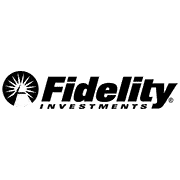We all want to reach retirement age with more than enough money to cover expenses for the rest of our life. If your workplace offers a 401(k) plan, maxing it out might seem like a simple way to reach that goal.
Unfortunately, saving enough for retirement isn’t always that easy. There are too many variables to simply say “put the maximum amount in your 401(k)” and be done with it. For some people, maxing out a 401(k) probably shouldn’t even be their top savings priority. And what should you do if you’ve already reached the contribution limit but want to invest more?
It’s often difficult to know how and when to max out your 401(k) plan. The information below provides some helpful guidance for workers who are contributing significant amounts to their 401(k). We also recommend steps you can take to utilize a wide variety of retirement savings options in addition to your 401(k). Dig in and see what works for you and helps you meet your retirement goals.
Related: Best 401(k) Alternatives [If You Can’t Get One Through Work]
How Much Should I Save for Retirement?
The amount of money needed during retirement varies substantially from one person to another. How much you need depends heavily on the lifestyle you expect in retirement and the cost of living where you plan to live.
As a general rule, experts suggest replacing 80% of your current income with retirement savings. So, for example, if your current annual income is $100,000, save enough to have at least $80,000 per year in retirement.
To reach this goal, saving at least 15% of your income every year is a good rule of thumb. Of course, you’ll need to adjust the 15% goal to account for your age and any special personal circumstances. For instance, someone who starts investing in their early 20s can set aside a lower percentage than a worker who doesn’t start saving until later in life.
If you’re not sure how much you should save for retirement and you want an expert to weigh in, you can always discuss your needs with a qualified financial advisor.
Related: Retirement Saver’s Tax Credit: What Is It, How Much, Who’s Eligible + More
Is a 401(k) a Good Retirement Savings Account to Use?
You’re off to a good start from a retirement savings standpoint if your employer offers a 401(k) plan. One of the biggest advantages of a 401(k) is that most employers match a predetermined percentage of your contributions, which is considered “free money.” So, if you have access to a 401(k), contribute at least up to the matching amount.
Another benefit of 401(k) plans is that they are tax-advantaged accounts. A traditional 401(k) account is funded with “pre-tax” income and the earnings grow on a tax-deferred basis. As a result, money put into the account isn’t included in your taxable income, and you don’t pay taxes on it until you withdraw it from the account. Traditional 401(k) plans are great if you expect to be in a lower federal tax bracket when you retire, because you’ll pay tax at a lower rate.
With a Roth 401(k), money is put in your account on an “after-tax” basis, so contributions are included in your taxable income. But money in a Roth 401(k) grows tax-free, so you don’t pay any tax when you take money out of the account in retirement.
Contribution Limits
If you’re thinking about maxing out your 401(k), the annual contribution limit for most people is $24,500 for the 2026 tax year (up from $23,500 in 2025).
If you’re between the ages of 50 and 59, or 64 years or older, you can put in an additional $8,000 in “catch-up” contributions for a total amount of $32,500 ($7,500 for a total of $31,000 in 2025). And starting with the 2025 tax year, if you’re between 60 and 63 years of age, you can make a “super catch-up” contribution of up to $11,250, for a combined $34,750 ($35,750 in 2026).
Those are combined limits for all your 401(k) contributions. So, if you have two jobs and a 401(k) plan at both companies, you can’t put in more than $24,500 ($32,500 if you’re eligible for catch-up contributions, $35,750 if you’re eligible for super catch-up contributions) in total for the year.
If you have a traditional 401(k) and a Roth 401(k), the combined total also applies to the two different types of 401(k) accounts.
Early Withdrawal Penalty
You might also be hit with a 10% early withdrawal penalty if you withdraw money from a 401(k) account before age 59½ (although there are exceptions). With a traditional 401(k), the penalty applies to all early withdrawals. With a Roth 401(k), the penalty only applies to earnings withdrawn before you turn 59½. Contributions to a Roth 401(k) can be taken out at any time without paying tax or the 10% penalty.
Related: Should You Max Out Your 401(k) Each Year?
How to Max Out 401(k) + Other Retirement Account Contributions
Even if your employer has a 401(k) plan, it might be wise to utilize other retirement savings as well. For instance, if you do contribute the maximum amount to your 401(k) account but still want to save more, you’ll need another place to put your retirement funds.
You also might want more investment options than what’s typically available with a 401(k) plan—usually a limited number of mutual funds (including target-date funds) and, in rare cases, perhaps a few exchange-traded funds (ETFs). With some of the other types of accounts, you can invest in individual stocks, bonds, real estate, and more.
Some of the other retirement savings options available include a traditional or Roth individual retirement account (IRA), health savings account (HSA), or taxable brokerage account.
However, you want to properly utilize these other accounts along with your 401(k) to maximize their effectiveness. We recommend that you contribute to your 401(k) and other retirement accounts in the following order.
1. Maximize Your Employer Match
As mentioned earlier, any employer match going into your 401(k) is free money, so always make it your top priority to contribute as much to your 401(k) needed to get the maximum employer match. The amount employers match varies by company, so make sure you understand what your business offers.
Related: How to Get Free Money Now [Ways to Earn Money]
2. Use Your Health Savings Account as a Retirement Plan (And Max It Out)
After securing any 401(k) employer matching funds, max out an HSA if you’re eligible for one. To be eligible for an HSA, you must be enrolled in a high-deductible health plan. You also can’t be enrolled in Medicare, covered or any other disqualifying insurance, or claimed as a dependent on someone else’s tax return.
An HSA offers numerous tax benefits. First, your contributions are tax deductible, even if you don’t itemize. Employer contributions, if you have an account through work, are excluded from gross income.
HSA funds also grow tax-free. Any withdrawals used to pay qualified medical expenses are tax-free as well.
Before you turn 65 years old, any funds withdrawn from an HSA and used for anything other than qualified medical expenses are taxed. Plus, the IRS imposes a 20% penalty. After age 65, if the money isn’t used for medical expenses, it will be subject to tax, but no penalty is charged.
Contribution limits
You can contribute up to $4,400 to an HSA for the 2026 tax year if you have health insurance coverage for yourself. If you have family coverage, the maximum contribution is $8,750 ($4,300 and $8,550 for 2025, respectively). People who are at least 55 years old can contribute an additional $1,000 in catch-up contributions.
Related: How to Use Your HSA for Retirement
Fidelity HSA
- Available: Sign up here
- Minimum to invest: $0 for Fidelity HSA, $10 for Fidelity Go HSA
Fidelity offers two options for HSA accounts: the Fidelity HSA or the Fidelity Go HSA.
The self-directed Fidelity HSA is best for people who prefer to handle their own investments. With this account, you can invest in stocks, bonds, mutual funds, and ETFs. You can even buy fractional shares of stock. You’ll also benefit from commission-free trades, minimal fees, and no account minimums. This HSA account also comes with a debit card that you can use for qualifying healthcare expenses.
People seeking a managed account could opt for the Fidelity Go HSA instead. Funds in a Fidelity Go account are invested in Fidelity Flex mutual funds, which feature no management fees and often no fund expenses.
- Maintenance/other recurring fees: None
- Investment fees: Fidelity HSA: No fees. Fidelity Go HSA: No advisory fees for balances under $10,000; $3/mo. for a balance of $10,000-$49,999, 0.35%/yr. for balances of $50,000 and above.
- Minimum balance to invest: Fidelity HSA: $0. Fidelity Go HSA: $10.
- Investment options: Fidelity HSA: Stocks, bonds, ETFs, mutual funds. Fidelity Go HSA: Fee-free Fidelity Flex mutual funds.
- Maximum investment flexibility via self-directed Fidelity HSA accounts
- Low/no minimum to invest depending on type of account
- No fees for Fidelity HSA
- No fees on low- to mid-balance accounts for Fidelity Go HSA
- Can buy fractional shares
- Mobile app
- Bill pay
- FDIC-insured cash accounts
- SIPC-insured investment accounts
- Regressive fee structure for managed Fidelity Go HSA investment accounts
Related: How to Invest Money: 5 Steps to Start Investing w/Little Money
3. Max Out Your Individual Retirement Accounts
After maxing out an HSA, we recommend maxing out an IRA. These accounts are great for retirement savings because they provide tax benefits and have low account fees.
IRAs also offer ample investment options. With a 401(k) plan, you typically only get to choose between a few mutual funds—if you even get a choice. However, with an IRA, you can invest in a variety of mutual funds, ETFs, individual stocks, and much more.
Traditional IRA vs. Roth IRA
The main difference between a traditional IRA and a Roth IRA is when you pay taxes. Both are tax-advantaged retirement accounts, but in different ways.
Traditional IRA contributions are fully tax deductible for people who don’t have a workplace retirement plan. Your earnings also grow on a tax-deferred basis. When you take money out of the account during retirement, you pay ordinary income tax on the withdrawals.
In comparison, there’s no tax break for Roth IRA contributions. However, money in the account grows tax-free, and you don’t owe taxes when you withdraw money in retirement.
It’s sometimes good to have both types of accounts. That way, you have both taxable and tax-free withdrawal options during retirement.
On the other hand, if you want to focus on just one type of IRA, base your decision on how your current income compares to your expected retirement income. Generally, if you expect to have a lower income in retirement, a traditional IRA might be the better choice. If you expect a higher income later in life, a Roth IRA might be a better option. That way, you’ll be paying tax when your federal tax rate is lowest.
Related: Best Rollover IRA Accounts [Where to Rollover a 401(k)]
Contribution limits
For 2026, you can contribute up to $7,500 in total to all your IRAs, up $500 from 2025. People 50 or older can contribute $1,100 more in catch-up contributions, for a total of $8,600 (up from $1,000 and $8,000, respectively, in 2025). However, you can’t contribute more than your earned income for the year.
There are also special income limits for people with a Roth IRA. To max out the account, your modified adjusted gross income (AGI) must be under $153,000 for single filers or under $242,000 for married people filing a joint tax return ($150,000 and $236,000 in 2025, respectively). The maximum contribution limit for a Roth IRA is gradually reduced to zero if your modified AGI is between $153,000 and $168,000 for single filers or $242,000 to $252,000 for joint filers ($150,000 and $165,000 for single filers or $236,000 to $246,000 for joint filers in 2025).
You can contribute to a traditional IRA regardless of your annual income, but there are income limits for tax-deductible contributions if you (or your spouse) is eligible for a workplace retirement plan (e.g., a 401(k) plan).
Related: Best Rollover IRAs + Providers [Where to Roll Over a 401(k)]
4. Max Out Your 401(k)
If you’ve contributed to your 401(k) up to the matching amount, maxed out both your HSA and IRAs, and still have more money you can save, then it’s wise to max out your 401(k).
As a tax-advantaged account, it’s preferred over other accounts that don’t provide a tax break.
5. Save With Taxable Brokerage Accounts
Once you’ve maxed out all the tax-advantaged retirement accounts, you can still save money in taxable brokerage accounts. These accounts offer a vast variety of investment options, and the fees are typically lower than the fees for a 401(k) account.
There are no contribution limits with brokerage accounts, either. So, you can stuff as much money in these accounts as you want.
Furthermore, investments in these accounts are highly liquid, so you can quickly get money when you need it. There are no early withdrawal penalties, either. So, you can sell your investments at any time if you need extra money before retirement. Plus, depending on the investments you choose, you can also generate passive income.
The downside to brokerage accounts is that they come with limited tax advantages. There are no tax breaks when you fund them, and earnings are taxed. You pay lower capital gains tax rates when you sell assets in the account that you’ve held for over a year, and you might be able to deduct losses, but otherwise these accounts don’t offer the same tax breaks as the retirement accounts discussed above.
Related: Best Investments for Taxable Accounts
How to Create a Retirement Plan That Meets Your Needs
Every individual’s retirement plan will differ. When developing a retirement plan, consider your own needs, risk tolerance, and investing goals … and ask yourself questions such as the following.
“What Type of Lifestyle Do I Want In Retirement?”
Some people live more frugally while they are younger so they can travel extensively or spoil their grandchildren during retirement. Others plan to move to a more affordable city during retirement and expect to have fewer expenses.
If you want to live a lavish lifestyle in retirement, then you need to save more when you’re young. You might also want to put more money in Roth accounts, so that your tax burden is lower in retirement.
On the other hand, if you want to live large while you’re young and cut back when you retire, you might lean toward traditional 401(k) plans and IRAs so you’re cutting your tax bill now and deferring taxes until retirement when your tax rate might be lower.
Either way, you still need to save something for retirement.
“How Much Do I Expect to Get From Social Security?”
Knowing how much you’ll get each month in Social Security retirement benefits can help you figure out how much money you’ll likely need to save overall. Generally, your monthly benefits will depend on your annual earnings during your lifetime and the age at which you start receiving benefits.
Also, don’t forget that some of your Social Security benefits might be taxed. However, there are ways to lower or avoid taxes on Social Security benefits.
“Do I Have Any Chronic Health Issues or Another Reason to Expect High Healthcare Costs?”
Medicare doesn’t cover all medical expenses and some people still spend a substantial amount of money on healthcare in retirement. An HSA is a strategic investment for anyone, but it can be especially valuable if you’re likely to spend a lot on medical costs during retirement.
“What Age Do I Plan to Retire?”
Your timeframe should affect your investments. The farther away from retirement you are, the more aggressive you can be. As you approach retirement, your investing strategy should become more conservative.
Keep in mind that your retirement plan is contingent on many factors, such as whether the market will perform as expected, inflation will rise at a standard rate, you’ll develop an illness or become disabled, and more. To account for unforeseeable changes to your future, save as much as is realistic for your financial situation.
Of course, investing also involves risk. However, buying and holding low-cost, diversified investments over long periods of time is a proven strategy to build wealth. You can also consult with a wealth management professional or financial advisor who operates under the fiduciary standard to minimize your risk.
Related:












![How Much to Save for Retirement by Age Group [Get on Track] 15 how much to save for retirement by age group](https://youngandtheinvested.com/wp-content/uploads/how-much-to-save-for-retirement-by-age-group-600x403.webp)

